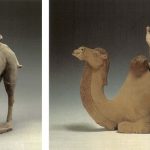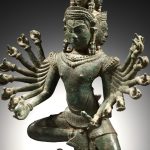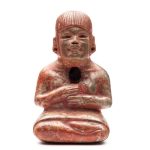Mummy Mask from Balansurah
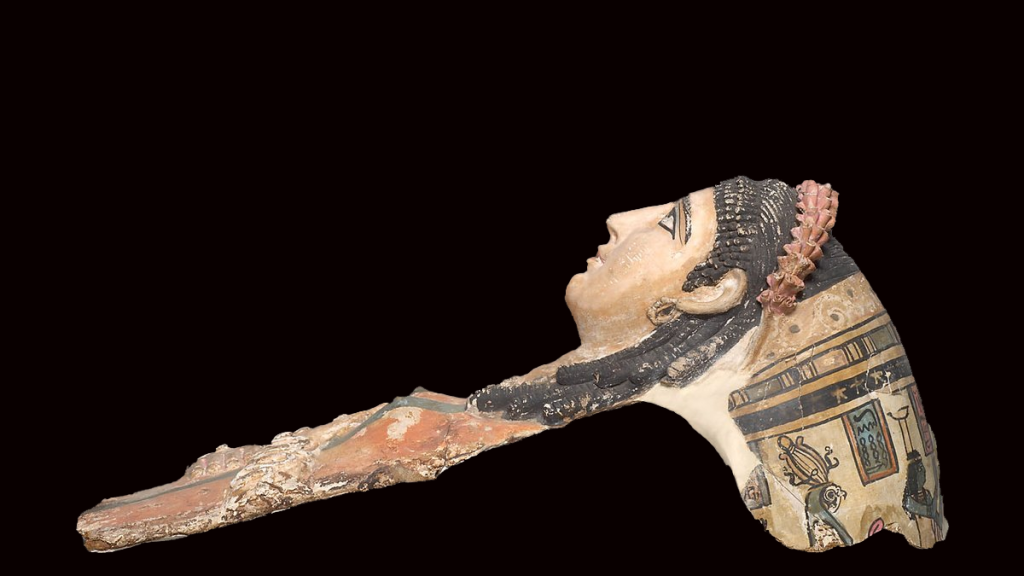
Cartonnage Coffin Fragment of a Woman 🪵🎨
Roman Egypt, early 2nd century A.D.
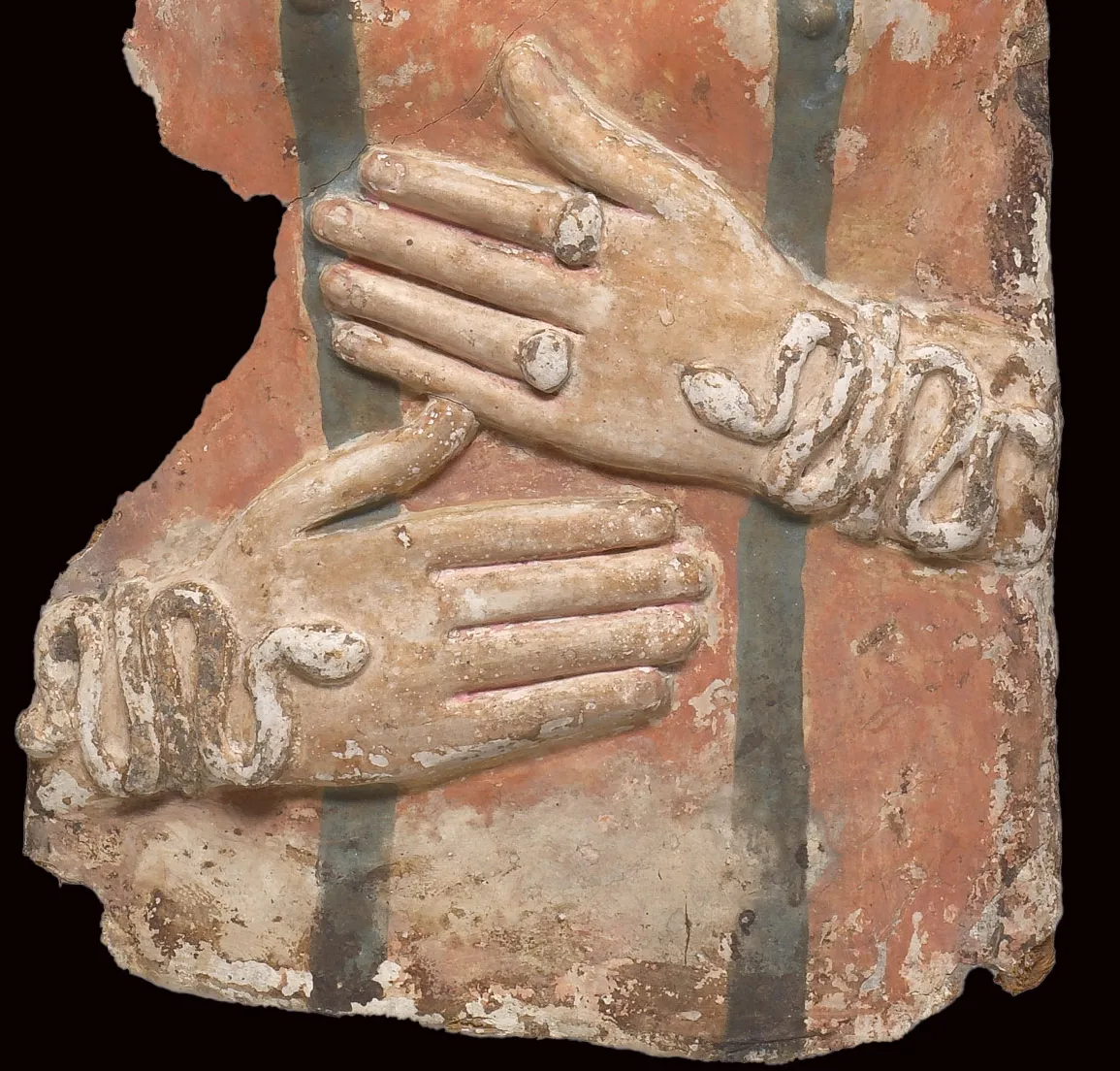
Dating from the first quarter of the 2nd century A.D., this piece depicts the head and chest of a woman and is all that remains of a cartonnage coffin, which would have been fitted over her mummy prior to burial.
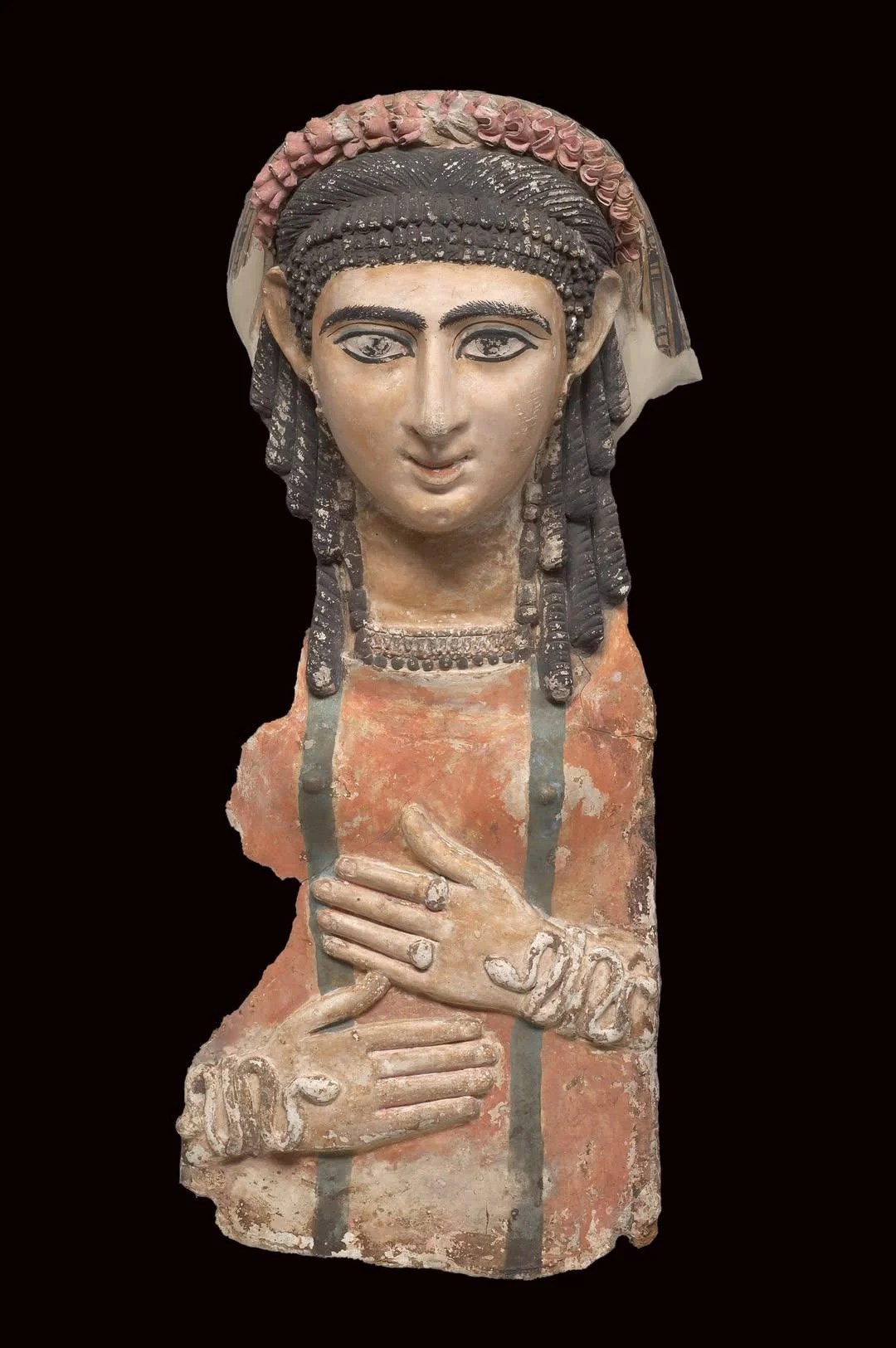
The woman has black, curled or tousled hair adorned with a floral crown. She wears a red tunic with black lining, a fashionable staple of her era. Her wrists and hands are decorated with coiled snake jewellery, a popular style in Egypt during the Greco-Roman period.
The quality of her mummy mask, along with her attire and adornments, suggests she belonged to the wealthy, Romanized elite of provincial Egypt 🇪🇬. By the early 2nd century A.D., mummification combined traditional Egyptian religious practices with Greco-Roman portrait styles. Commissioning a vividly painted cartonnage coffin, along with jewellery and finely depicted textiles, was costly, indicating that she was likely from a family of means, possibly local landowners, administrators, or well-to-do urban households able to blend Egyptian burial customs with Roman fashion.
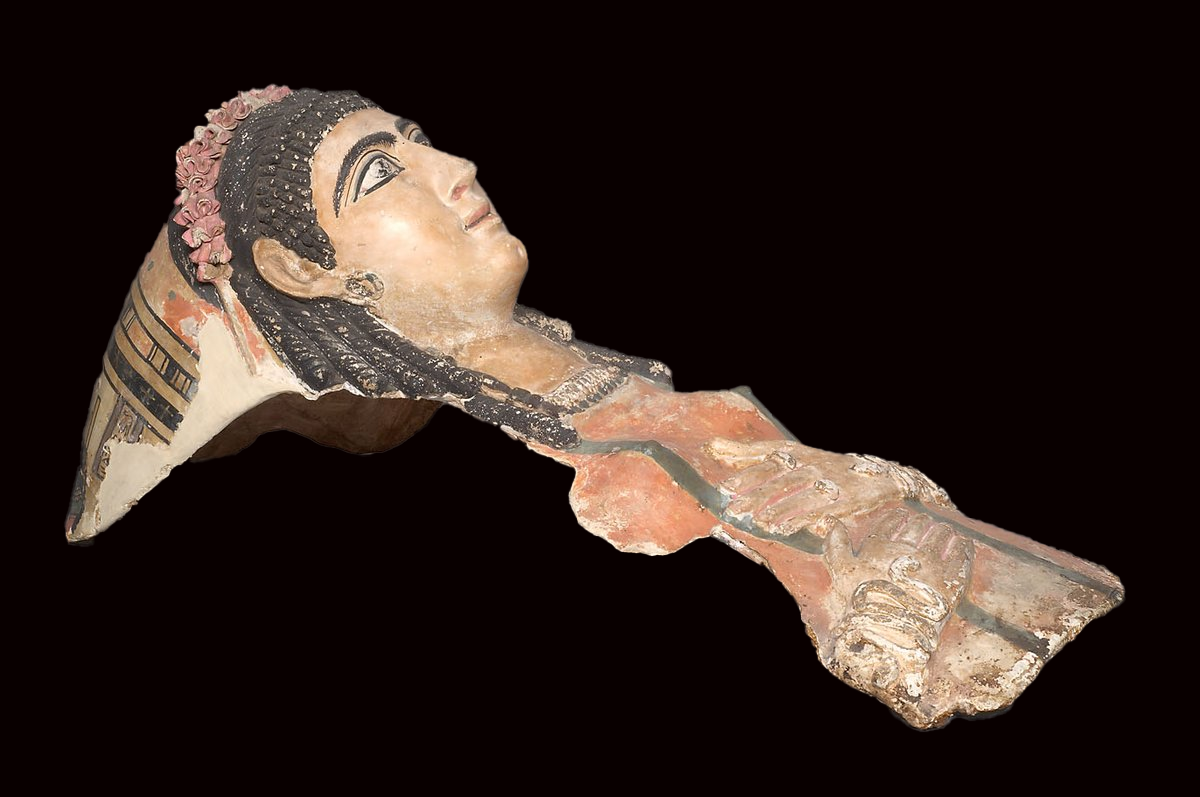
In Roman Egypt, garlands of flowers symbolized youth, vitality, and eternal life, frequently appearing in funerary portraits from the Fayum and beyond. These floral wreaths reflect both the Egyptian symbolism of rebirth and the Greco-Roman ideas of festive immortality, while also hinting at refinement, cultivated taste, and participation in elite banquets or cultic festivals.
Snake jewellery was fashionable across the Roman world, but in Egypt it held dual symbolism. The serpent represented eternal protection and regeneration, connecting to both the uraeus (sacred cobra of the pharaohs) and Greco-Roman deities such as Isis and Dionysus. Worn in gold, it displayed wealth and social status while also serving as a protective charm for the deceased.

